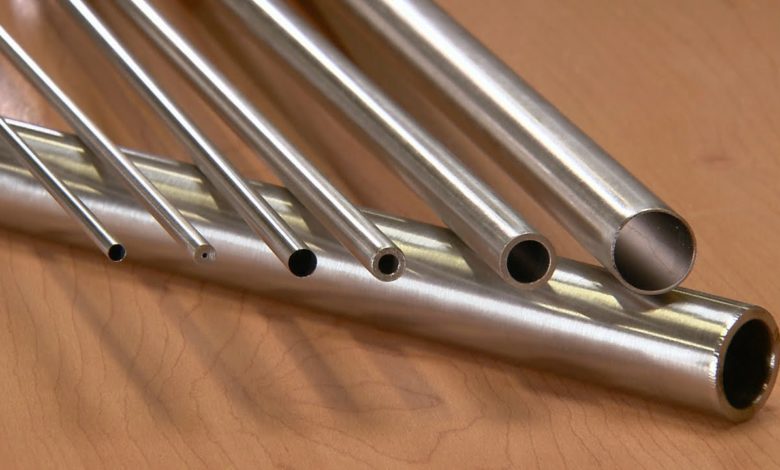The Ultimate Guide To Stainless Steel Tubing

Stainless steel is a popular material due to its excellent properties and versatility. Stainless steel tubing is a great way to take advantage of these qualities while reducing your costs. A blog article on stainless steel 904l tubing with tips and advice on choosing, using, and polishing this metal type.
What is a Tubing?
Stainless steel tubing is a type of tubing that is made from stainless steel. It is often used in the construction and manufacturing of various types of products. Stainless steel tubing is a sturdy material that can withstand high temperatures and harsh environments. Additionally, it is resistant to corrosion and other damage.
Most stainless steel tubing is composed of two layers: the inner layer is made of stainless steel and the outer layer is made of a polymer. This type of tubing has several advantages over other types of tubing. For example, it is resistant to corrosion and can withstand higher temperatures than other types of tubes. Additionally, it is easier to install and maintain than other types of tubes.
Some common uses for stainless steel tubing include beverage dispensing, food packaging, medical supplies, chemical tanks, and oil rigs. Stainless steel tubing is also used in automotive manufacturing, aerospace engineering, and construction projects.
Type of Stainless Steel
Stainless steel tubing is the ideal material for use in food preparation and cooking because it does not react with acidic foods or beverages, it does not rust, and it can be easily cleaned. There are three types of stainless steel tubing: Type 304, Type 316, and Type 347.
Type 304 stainless steel is the most common type of stainless steel tubing found in grocery stores and restaurants. It is less expensive than other types of stainless steel tubing, but it does not hold up as well to heat and pressure. Type 316 stainless steel is a better choice for food preparation and cooking because it is resistant to heat and pressure, but it is more expensive than type 304 stainless steel. Type 347 stainless steel is the highest quality Stainless Steel tubing available, but it is also the most expensive.
Types of Tubing
There are many types of tubing available on the market today, and it can be difficult to decide which one is best for your application. In this article, we will discuss the three main types of tubing and their advantages and disadvantages.
Steel Tubing: Steel tubing is the most common type of tubing, and it is often used in applications where durability and strength are important. Steel tubing is also resistant to corrosion, which makes it a good choice for applications where water or other liquids are present. One downside of steel tubing is that it can be difficult to work with, and it can also be expensive.
Copper Tubing: Copper tubing is a popular option because it is lightweight and easy to work with. It also has good corrosion resistance, making it a good choice for applications where water or other liquids are not present. One downside of copper tubing is that it can be sensitive to temperature changes, which can cause problems in some applications.
PVC Tubing: PVC tubing is a versatile option because it can be used in a variety of applications. PVC tubing is resistant to decay and aging, which makes it a good choice for applications where longevity is important. One downside of PVC tubing is that it
Safety Tips for Tubing
When working with stainless steel tubing, it is important to take some safety precautions to keep yourself and others safe. Here are a few tips:
- Wear gloves when cutting or handling the tubing. Stainless steel is sharp and can cause cuts on hands.
- Use a wire brush to clean the surface of the tubing before welding or cutting it. This will remove any ridges or burrs that could cause obstruction during welding or cutting.
- Avoid touching the welds or ends of the tubing with your hands. Wearing gloves will protect your hands from heat and sparks, but you still need to be careful not to get sparks on your skin.
- Never use acetylene gas in a confined space, such as a welding room. Acetylene gas is explosive and can create a dangerous fire.
- Always use caution when working with high-voltage electrical wires and equipment. If an accident should occur, be aware of the dangers posed by electricity and do not try to fix the problem yourself. Contact a professional immediately.
Alternatives to Stainless Steel Tubing
If you’re looking for a less expensive option when it comes to stainless steel tubing, you may want to consider opting for alternate materials. Here are four of the most common:
– PVC tubing: PVC is a popular choice for plumbing because it’s inexpensive, easy to work with, and resistant to corrosion. However, PVC isn’t as durable as stainless steel tubing, so care should be taken when installing and maintaining it.
– Copper tubing: Copper is a popular choice for plumbing because it’s strong and resists corrosion. However, copper is also heavier than stainless steel tubing, so it may not be the best option if your project requires light weight components.
– Aluminum tubing: aluminum is a popular choice for construction because it’s lightweight and has a high strength rating. However, aluminum can be more expensive than other options, so be sure to compare prices before making a purchase.
– brass: brass is a popular choice for plumbing because it’s resistant to corrosion and has a nice patina that can add character to your project. Brass is also heavier than other options, so be sure to account for that when choosing a material.
Conclusion
The bottom line is that stainless steel tubing is a great choice for both cold and hot water systems, and Kalpataru Piping Solutions is a renowned Manufacturer & Exporter of high-quality stainless steel pipes. It’s durable, has a low reactivity, and is easy to clean. In addition, it can be used in both residential and commercial applications.




